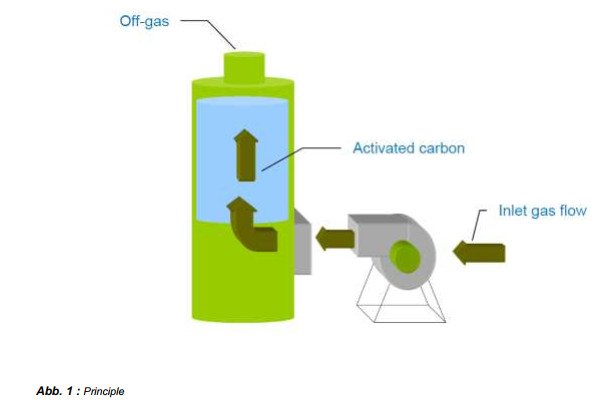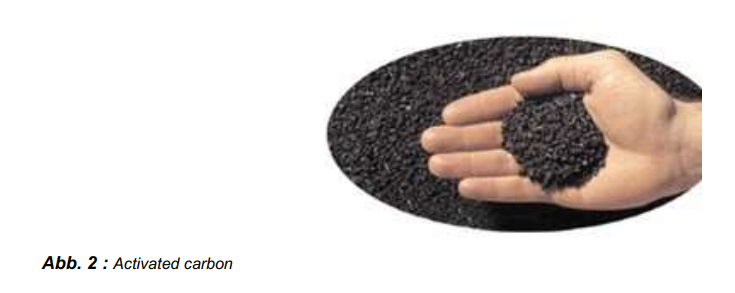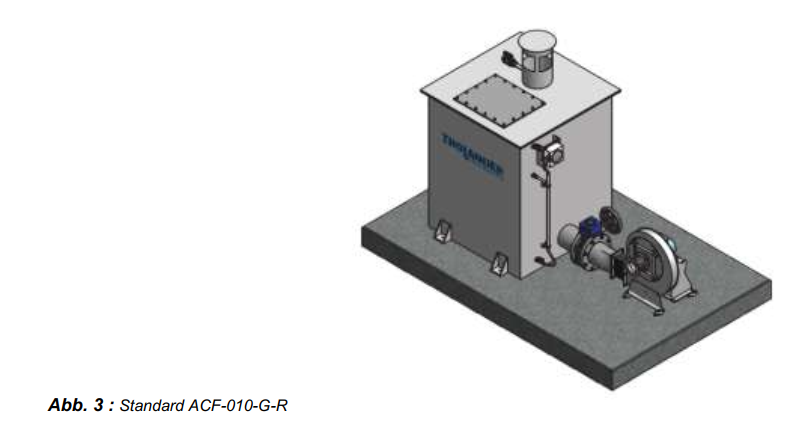CÔNG TY TNHH KỸ THUẬT HUY PHONG
Trụ sở chính: Số 11 Đường Võ Văn Tần, Phường 6, Quận 3, Tp.HCM
Văn phòng đại diện: 53 Đường số 9, Phường Tân Kiểng, Quận 7, Tp.HCM
Điện thoại: (84-8) 5433 2773 – 5433 2774 - Fax: (84-8) 5433 2775


CÔNG TY TNHH KỸ THUẬT HUY PHONG
Trụ sở chính: Số 11 Đường Võ Văn Tần, Phường 6, Quận 3, Tp.HCM
Văn phòng đại diện: 53 Đường số 9, Phường Tân Kiểng, Quận 7, Tp.HCM
Điện thoại: (84-8) 5433 2773 – 5433 2774 - Fax: (84-8) 5433 2775


 | Hôm nay | 40 |
 | Hôm qua | 151 |
 | Tuần này | 896 |
 | Tháng này | 365 |
 | Tổng truy cập | 231535 |
General Description
Activated Carbon Filter (non regenerable )
1. Adsorption
During the adsorption the contaminated air is passed through an adsorbent, wherein the harmful
substances are adsorbed onto the surface. A possible adsorbent is an activated carbon filter. The loose
activated carbon bed has a very large surface area and thus enables a long service life.
2. Principle of operation
The activated carbon filter is constructed in layers. The bottom layer consists of a hollow space in which
the air is blown with the help of the fan. A butterfly valve allows, depending on size and equipment, manual
adjustment of the airflow or to adjust the amount of only one frequency.
Over the hollow space is a grid, which ensures that the activated carbon does not slip down. On the grid is
the activated carbon bed.
In the filter the air moves slowly through the activated carbon bed where the malodorous organic
compounds are adsorbed. After treatment the clean air is discharged into the atmosphere via the clean air
outlet.
A saturation indicator located in a sampling nozzle at the top of the filter indicates if the carbon is loaded
and needs to be replaced.
Activated carbon filters are used for example in pumping stations, in pharmaceutical productions, in the
mechanical-biological waste treatment or solvent removal.

3. Activated carbon
The Tholander activated carbon filters are designed to remove at least 99% of odor relevant gases in
wastewater processes in a temperature range of 5 to 60 ° C and a relative humidity of 10 to 90%.
3.1. Properties of the activated carbon
3.1.1. Low pressure loss
The activated carbon is characterized by high hardness and abrasion resistance, while providing a low
pressure drop.
3.1.2. Specially designed for waste and wastewater plants
A special treatment of the coal gives the high absorption capacity with respect to volatile organic
compounds, hydrogen sulfide and mercaptans, that pollutants which are mainly responsible for the bad
odors in wastewater processes.
The coal forms sulfuric acid on the carbon surface (H2S + 2O2 → H2SO4), with which also ammonia can
be removed well.
3.1.3. Unique performance at high humidity
Because its ability to work efficiently with high humidity (up to 90%), this activated carbon is particularly well
suited for the treatment of moist air out of the sewers and sewage treatment plants.
3.2. Replacement of the activated carbon
If the carbon is completely loaded, it must be replaced. For this purpose, the manhole cover in the roof of
the Filter has to be opened, the loaded carbon removed and new coal installed.

4. Filter
4.1. Adsorber vessel
The activated carbon filter consists of a rectangular or cylindrical container with a flat bottom and a flat or
domed roof. The container is constructed of corrosion-free glass fiber reinforced plastic (GRP) and
manufactured by hand laminate. This laminate is made of high quality polyester resin and glass fiber mats.
The inside of the container is coated with a special chemical protection layer. The outside is coated with a
pigment layer which serves as a UV absorber.
The container is designed for a maximum operating pressure of 3 kPa and a maximum temperature of 60
°C. All system components are constructed of materials which are adapted to the respective operating
conditions.
4.2. Accessories
4.2.1. Sampling nozzle
Each adsorption system has three sampling nozzle at different locations of the filter, for example to take
samples or to measure the loading of the activated carbon. The nozzles are closed with stopper.
4.2.2. H2S saturation indicator
The saturation indicator is a simple method to realize a breakthrough of contaminants through the activated
carbon bed. The indicator consists of a transparent tube which is filled with a medium. This medium has in
unused condition a bright purple color and turns brown when exposed to H2S.
The indicator is screwed into a sampling nozzle which is located above the activated carbon bed and is
contacted by the already purified air. If the medium in the tube is brown, it can be assumed that the
activated carbon bed is fully loaded and must be replaced.
4.2.3. Differential pressure measurement
The principle of the differential pressure measurement is based on the measurement of the difference of
two different pressures and is used to monitor the pressure filter. The pressure can change for example
when the carbon bed material is clogged or the fan is not working properly.
As a standard, mechanical pressure gauges are used. Optionally, electronic instruments with the possibility
of signal transmission can be used.

Biofiltration
Due to its process-integrated biological regeneration the biofilter technique is an effective method for odor
elimination and treatment of low concentration or undefined exhaust air streams. This advantage is
realised due to the natural reactions of the biological degradation of contaminants. It takes place at:
ambient temperature
neutral pH and normal pressure
produced no problematic final products
The biotrickling filter is a 1-stage packed scrubber passed by the waste air from the bottom to the top. This
unit operates under limited aerobic conditions and uses specific bacteria to convert hydrogen sulphide into
water-soluble harmless components.
Tholander Environmental Engineering has been founded in 1986. It has developed air pollution
control equipment and is one of the leading suppliers of odour control systems for industrial and
municipal applications.